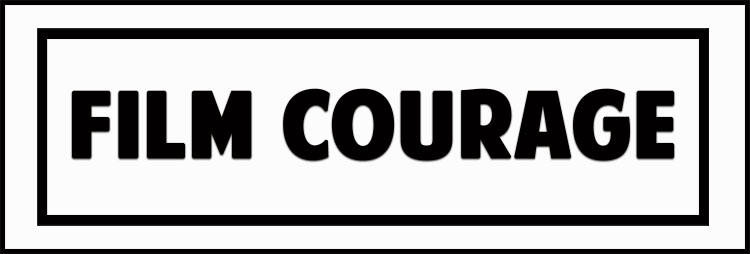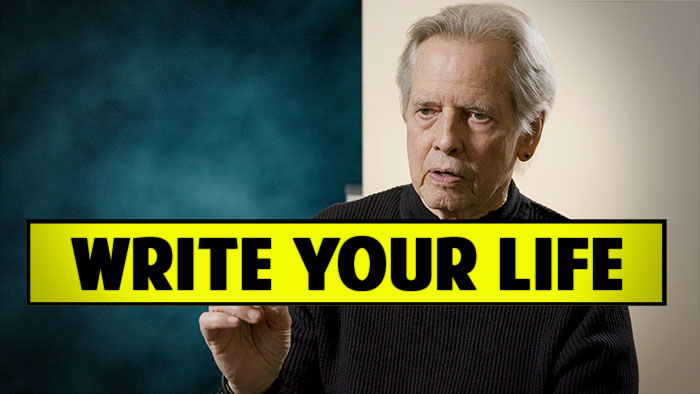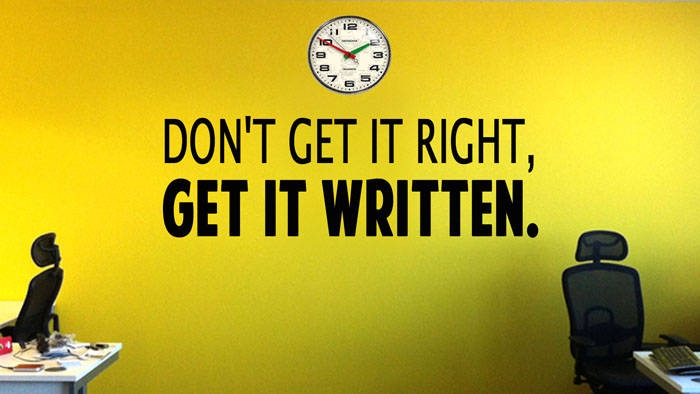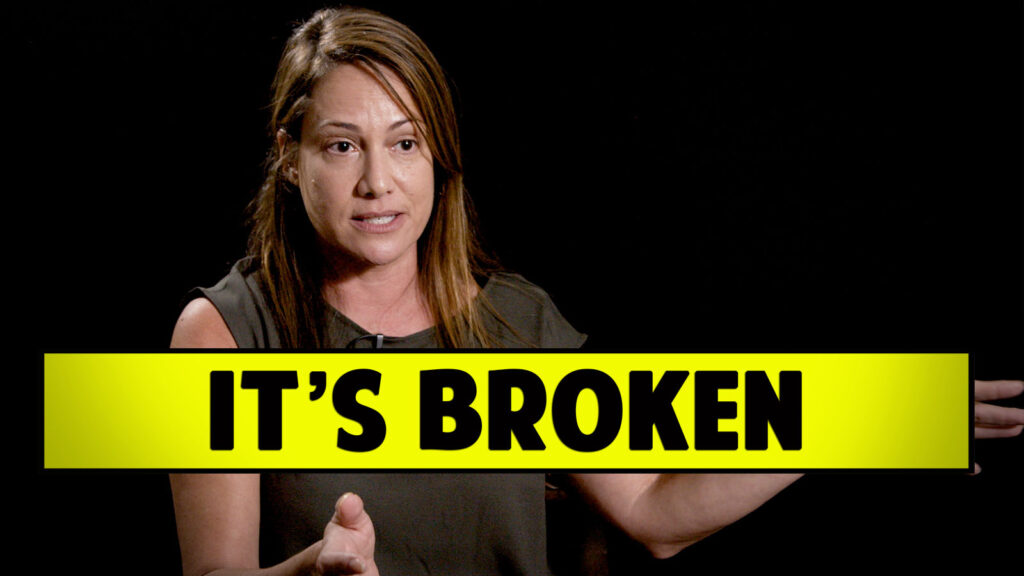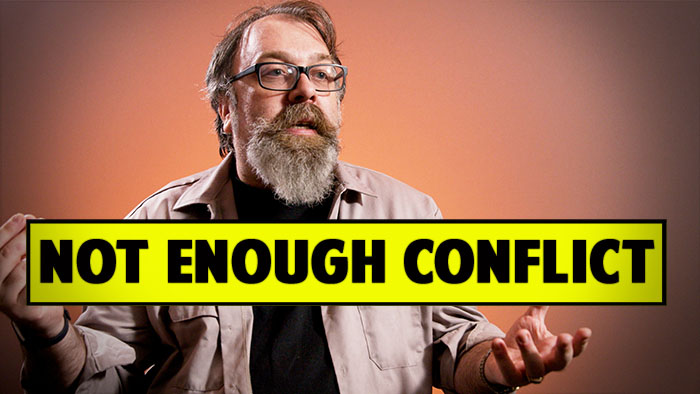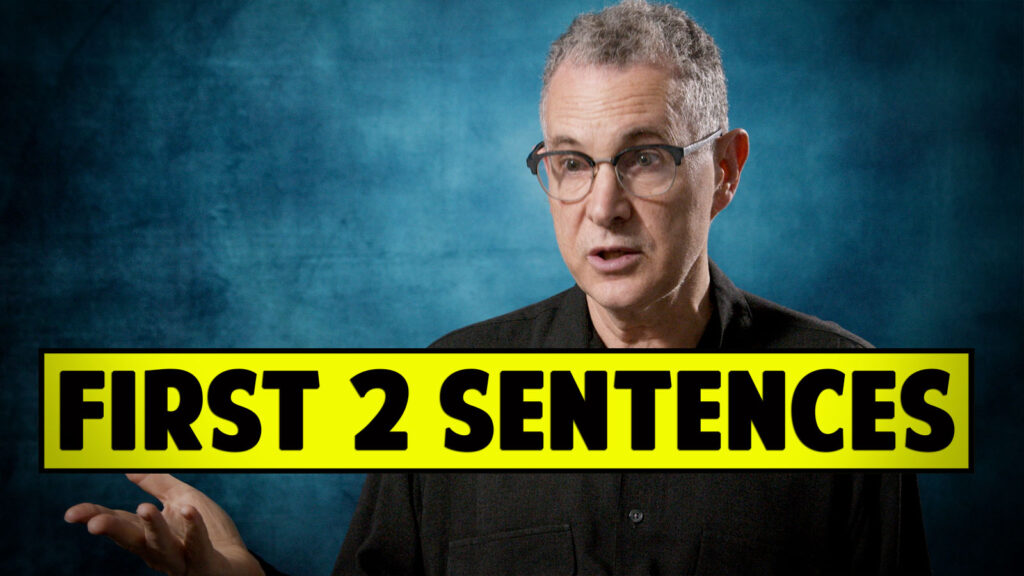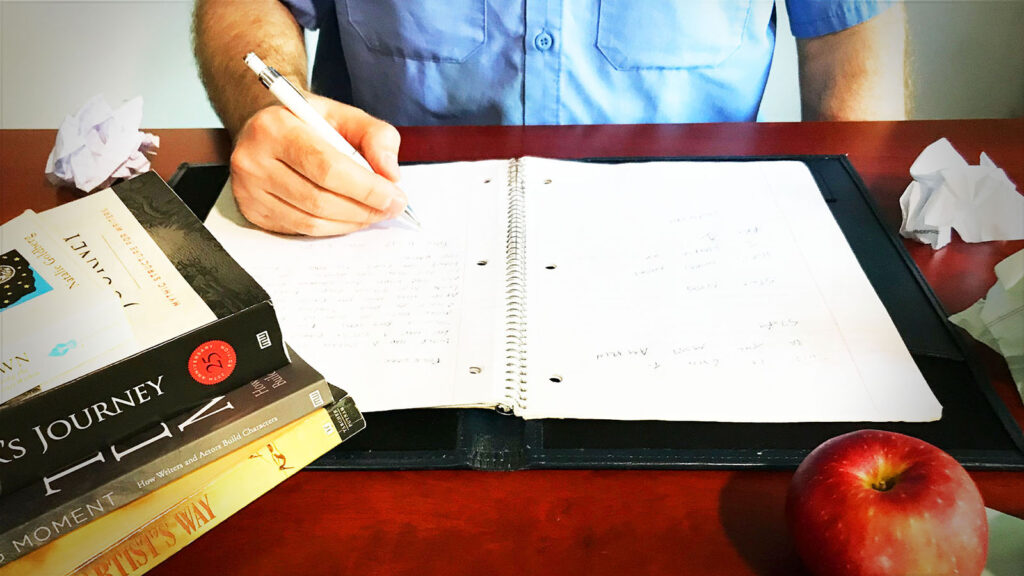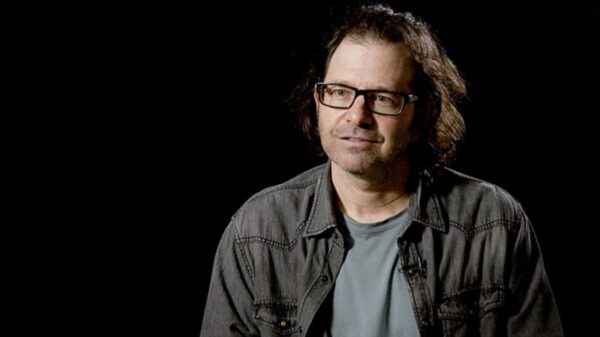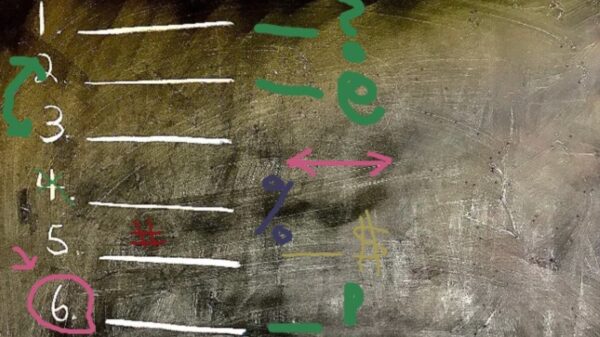
Filmmaker Edwin Gailits of COLD NIGHTS HOT SALSA
Film Courage: Did you go to film school?
Edwin Gailits: I went to Ryerson Photo Arts school in Toronto. I made some interesting16 mm films when at Ryerson but ending up eventually focusing on still photography. I still recall my film teacher saying to me, after I revealed I was going to pursue the still photo stream, that many great cinematographers were first good still photographers. In fact he encouraged me to develop those skills. I was impressed by this attitude and those sentiments stayed with me.
“Victor and Katia [the film’s subjects] were very good dancers, possessing what I saw was championship ability. But equally important, they also presented a sense of authenticity and comfort in front of the camera. They were open to me and responded to my serious aim to make a film. This did not appear to frighten or close them off from me, just the opposite.”
Edwin Gailits, Filmmaker COLD NIGHTS, HOT SALSA
Film Courage: How did you get into the Salsa dance scene?
Edwin: I went on a holiday to Cuba and discovered salsa music and dance everywhere I went. While staying in a B&B style home stay (Casa Particular) in old Havana, I discovered many who came to Havana to learn salsa dancing. Over breakfast I heard stories from other guests at the Casa in which romances were formed on the dance floor and I started to envision the romantic charm of salsa.
It was around this time I thought perhaps I could make a film about salsa in Cuba. But after returning home to Canada, I explored what might be happening in Toronto. I knew there were many Cubans living in Toronto, and I started going to clubs where Cuban bands played and the room was filled with salsa dancers. This experience was very similar to the clubs I visited in Havana, and I started to think maybe I didn’t need to make the film in Cuba.

Watch the trailer for COLD NIGHTS HOT SALSA here…
Film Courage: What is your favorite Salsa style?
Edwin: At first I was attracted to Rueda de Casino, which is a unique Cuban salsa dance done in groups. It was quite breathtaking to see 8-10 dancers moving together through intricate patterns on a very fast beat, with each dancer anticipating the next move of the dancer across from them, and then adding some personal signature to their moves.
Later I fell in love with the On 2 style of salsa, which is danced in pairs. The number 2 refers to the second beat within the music, when stepping to the beat. There is a great deal of room for self-expression when dancing On 2, and many of the moves can be very sensual. The On 2 style developed as the dominant salsa dance style in New York City.
Film Courage: How did you first meet Victor Alexis (Contreras) and Katia Morales?
Edwin: Not long after I started exploring salsa dance in Toronto clubs I learned there was an upcoming event (Canada Salsa Congress ) in the city where many salsa dancers would attend. The Canada Salsa Congress also included a competition to crown the top salsa dancers in Canada. It was remarkable to me, because I had no knowledge this world existed, that more than 2,000 salsa dancers would descend on Toronto and meet under one roof to perform on stage, watch others perform and compete, but also social dance until 4:00 am on consecutive nights.
I was captivated by Victor and Katia’s Canadian Championship winning performance in the On 2 division, and met with them a short time later that evening. They were clearly rising stars in the salsa world. They came across as very down to earth and natural on camera. It was during this first meeting that I learned they were planning to go to the Third World Salsa Championship in Florida, and this is when I first started to think maybe there was a film to be made about a dancers journey to the World Salsa Championship.
Film Courage: How did you know they were the right couple for the film?
Edwin: Victor and Katia were very good dancers, possessing what I saw was championship ability. But equally important, they also presented a sense of authenticity and comfort in front of the camera. They were open to me and responded to my serious aim to make a film. This did not appear to frighten or close them off from me, just the opposite.
Film Courage: How did you get Victor and Katia to trust you?
Edwin: Trust is always a key issue when trying to make a film that matters. If you simply capture the surface of things there is little need for trust. Trust comes into play when vulnerability and privacy issues emerge.
With Victor and Katia our relationship developed over time. At first I believe they thought I would film a few of their performances and maybe a rehearsal and an interview and then the film would be done in one month or two. They didn’t realize until later that I was there to follow them over time. I followed them over three years.
There were many steps in the dance we did together. There were times when they stepped away and didn’t let me become too close, and other times when they let me into their lives. Capturing the more personal aspects of their life developed after they got to know me, probably late in the first year.
Film Courage: How was it getting into the behind-the-scenes dance competitions with your camera?
Edwin: In Canada, the salsa dance event organizers were very supportive and gave me full access to the events on stage and off.
This was not as trivial as it sounds. Salsa congresses, where thousands attend, cost a great deal to produce. The organizers of these events are partly able to pay for some of their expenses through having the event filmed, edited, packaged and sold on DVD. They hired a film production company to film everything.
I had to promise I would not release any of my footage of the events to the public, which could have cut into their DVD business. I assured them I was making a long form documentary which would be released several years after their events took place, when their DVD sales would have largely finished.
At the World Salsa Championships the stakes were higher. That event was filmed by a large 10+ camera film production company, and it was later broadcast on ESPN around the world. They couldn’t allow any footage to leak out before their broadcast. Fortunately I found supportive people involved, including Albert Torres, who helped me convince the television producer I was both legitimate and trustworthy. Albert’s support at this event and at many other events over the years was very valuable and greatly appreciated.
Film Courage: How big of a crew was with you? What camera(s) did you use?
Edwin: Initially two cameras were used, my camera and a second one. I would hire different camera operators at different events. At the beginning I used a small Sony HDV camera. But as soon as the Sony EX1 was released I starting shooting the film exclusively on that camera. The difference in quality from HDV to EX1 was significant. Prior to the EX1 most broadcast quality cameras cost anywhere from $40,000 – $80,000. The EX1 and many cameras that followed soon after changed the game for small indie filmmakers like myself. You could shoot high quality material with a camera that cost less than $10,000.
At some of the later events I would have three cameras filming the events. Two cameras would typically follow the events on stage, and one camera was back stage.
Film Courage: What parallels/differences do you see from the 1990’s independent filmmaking boom to the current DSLR/Crowdfunding era of filmmaking? Do you think it’s easier or more difficult to currently find an audience for smaller films?
Edwin: In many respects it’s a great deal easier to make a film today and the image quality is significantly better today than in the 1990s. Even more recently, with the advent of 4K & and now 6K, the image quality difference is even greater.
Financing a film has both changed and stayed the same. For the films that have broadcast or other industry support things have stayed more the same, except there is more potential for international partnerships. Globalization of markets over the last 20 years has brought with it the expansion of co-productions between multiple foreign partners. The prime players in those markets continue to do well, but breaking into that sector hasn’t become easier, possibly the opposite.
On the other hand, making a high quality low budget film, like I did, is easier today. Crowdfunding is an option that some have used to great effect, but it comes at a cost. The time and energy to put a campaign together, set against the money raised brings large challenges. In addition your obligation to your funders continues well beyond the campaign. And if you can’t afford to hire staff to help, it takes a great deal of time. If you’re working on a crowdfunding campaign you are not working on your film.
The unique stories of a few filmmakers raising hundreds of thousands of dollars through crowdfunding can be quite misleading. Yes these types of campaigns have happened but the average campaign typically brings in a small fraction of that amount.
I chose not to crowdfund. Instead I applied for and received a small government development grant to get started, and when my efforts to secure traditional broadcast funding did not pan out, I was forced to self-funded the production.
“My dream was to make an interesting documentary film. I couldn’t see exactly what film I was making until I was a long way down the road. It probably wasn’t until about the fifth year that I started to fine tune the story. Prior to that, I followed many paths, including following many other dancers over the first three years. I wanted to tell multiple stories but those stories didn’t really come together into a unified whole….In the end all those paths did take me to where I am now.”
Edwin Gailits, Filmmaker COLD NIGHTS, HOT SALSA
Film Courage: Victor’s statement in the film “I went where life brought me and now I am here.” How was the statement true for you in terms of making this documentary?
Edwin: I think Victor’s statement suggests how those who follow their passion in life have to travel an uncertain path. Victor’s life, in which he follows his dream, is much like the life I followed making this film. My dream was to make an interesting documentary film. I couldn’t see exactly what film I was making until I was a long way down the road. It probably wasn’t until about the fifth year that I started to fine tune the story. Prior to that, I followed many paths, including following many other dancers over the first three years. I wanted to tell multiple stories but those stories didn’t really come together into a unified whole.
In the end all those paths did take me to where I am now.
Film Courage: One scene that was particularly interesting was one of the many beautiful dance competition numbers which Victor and Katia performed. Upon finishing Victor comments that they did their best and that was it – two minutes of show for a year’s worth of rehearsal. How do you identify with this as a filmmaker?
Edwin: After hearing Victor’s comment I first thought about how Olympic athletes go through a similar process of training for years and then have only a short time to prove themselves on the Olympic stage.
In some sense I’ve felt like that with respect to this film at different times. I think of the many thousands of hours I’ve spent making the film, and then I come away with a sixty minute film. At some points it has felt like a small result for such a large input.
At the same time I recognize and value the journey. It is in the process of making a film where the growth and discoveries are made. The final product may sometimes feels incidental. That said, it’s certainly satisfying to have something to show after all that time.
Film Courage: Seeing how specific dance competition judges are and the pressures each performer faces, how can you relate to this in terms of viewerships of films, especially in light of the mass influx of amazing independent films in the last 10 years?
Edwin: In this context I think about the process of trying to get a film into a film festival. There are many thousands of films being made every year and submitted to festivals. Most filmmakers want to get their film into a film festival to show the world what they’ve done. The problem is there is only room for perhaps 5% of the films being submitted to film festivals. This means that the odds of getting into a festival are small. And this doesn’t even consider the odds of winning an award, which are even smaller. I submitted to over 100 festivals and played in almost 10. My odds played out slightly better than the average.
When Victor and Katia go into a World Salsa Championship competition they know the odds they face. Initially the chance of winning is small. But as they demonstrate, dedicated training and hard work over time can change things.
Film Courage: You have another interview in the film from dancer/teacher Billy Fajardo (with partner Katie Marlow) whose life changed around age 39, overcoming addiction and what some might consider an age barrier. Is his story typical of many current Salsa dancers?
Edwin: Billy is definitely a very unique individual, and Katie his partner is equally amazing. There are few that I know of who continued to compete or perform at a high level when they were more than 50 years old.
Billy’s story could be a film unto itself. I almost have enough material for that film. In any case, he is a very focused and disciplined person, but he didn’t reach this stage without first going through about fifteen years of tremendous turmoil in his life.
He embodies the concept that dance saved his life. Without dance he had a good chance of not being alive today.
The other thing is, Billy had tremendous talent as a dancer from an early age. Without his enormous talent he could not simply work hard and get to where he went to in dance.
Film Courage: You have a few scenes with Albert Torres in the film where he addresses all dancers in these competitions and provides a pep talk. How true is what he says about sacrifices these Salsa dancers and competitors make? What hardships have you witnessed?
Edwin: Yes. I witnessed so many hardships that the dancers had to contend with in order to continue. One of the first dancers I followed, in addition to Victor and Katia, is Edson Vallon. He and his partner at the time, Marie-Denise, are remarkable dancers. They won the Canadian championship in the On 1 division, the same year as Victor and Katia won in the On 2. Edson and Marie-Denise were scheduled to go to Florida at the same time for the Third World Salsa Championship. They had a very good chance of doing well in the competition. A problem emerged just before the competition. Marie-Denise had to write an exam at school at the same time the competition was happening and she had to withdraw from the competition.
Working as a professional salsa dancer is very challenging. Because it’s so difficult to make a living as a dancer, many dancers are forced to pursue other career paths that can pay their bills. I witnessed this challenge and many others throughout the time I spent working on the film.
Film Courage: How long did it take to finish COLD NIGHTS HOT SALSA? How many edited versions did you create before you had the final cut? What were you looking to tell with the story that you kept editing?
Edwin: I finished Cold Nights Hot Salsa three or four different times over the roughly six years it took to make. I spent about three years filming and then another three editing, or at least changing the story.
The first edit was done about 8-10 months after principle photography was completed. Initially I edited the film myself, with only minor editing assistance.
I made numerous mistakes, including not showing the film to enough people to get feedback early on. I simply assumed it was a great film and started sending it out to film festivals. After 7-10 months, and 20-25 festival rejections, I started to rethink my assumptions. I next set up rough cut screenings and invited fellow filmmakers, dancers and friends to attend. This experience was very valuable. The feedback told me very quickly some of the many things that were not working. I went away and edited some more and showed it to some more people. Follow-up feedback indicated I was at a point where I couldn’t tell if I was making the film better or worse.
It was time for me to seek additional help. I next brought in a consulting editor, and a hands-on editor to disassemble and reassemble the film. That process was painful but also essential to get to where I am now.
In relation to remaining humble, dance teacher Edson Vallon says “Once You Think You Are a Hot Shot, You Stop Progressing.” Despite praise for your amazing work, does this mantra ring true in regards to film? Any examples?
I suppose I demonstrated the idea of what can happen if you are not humble in the editing processes. I suppose there was a certain amount of “Hot Shot” thinking in play when I thought the film was brilliant and ready to be first sent to film festivals.
At the same time I think there were other things going on. I also felt at some point that I had worked long enough on the film and wanted to call it done. I think perseverance and dedication are equally valuable assets to possess.
That said, I believe you do have to have a certain amount of hubris to get out and pursue a creative path in the world. The trick is to not become blinded by your self-image, but rather continue with great self-confidence while questioning the undertaking at the same time.
Film Courage: Where is COLD NIGHTS HOT SALSA available to watch?
Edwin: The film is available to rent or download on 5 platforms including, iTunes GooglePlay, Amazon, Xbox and Vudu.
iTunes
GooglePlay
Amazon
Xbox
Vudu
Film Courage: What’s next for you creatively?
Edwin: I’ve been exploring various ideas but none has really solidified as my next project. I think the answer is, it’s a work in progress.
ABOUT THE FILMMAKER:
Edwin Gailits has followed a number of roads to his current role as the producer, director, and editor of Cold Nights Hot Salsa. He began his career as a professional still photographer and then gravitated to theatre, where, for almost a decade, he produced and directed numerous classics theatre productions.
For the past 20 years he has been producing, directing, and editing films in a broad range of subject areas. Edwin has profiled the work of a Shibori fabric artist, examined the relationship between satellite data imagery, mathematics and watercolor painting and has produced a series of hybrid educational/fiction films that explored mathematics. More recently he produced a health care documentary that looks at some of the underlying structural problems of the US health care system. During the making of Cold Nights Hot Salsa, other projects he has worked on include producing films for an organization that studies and promotes the health benefits of music.
About the film:
COLD NIGHTS HOT SALSA takes you inside the international dance world of Victor and Katia, aspiring young salsa dancers from Montreal, who seek to win a World Salsa Championship.
During their three-year quest Victor and Katia draw upon the talents of Eddie Torres, Tito & Tamara, Billy Fajardo, and Katie Marlow. Central figures in the salsa dance world, these mentors put their passion and professional dance skills before you and reveal what it takes to perform and compete at the highest level.

Watch the movie on iTunes here!
Victor and Katia’s story is a love story. It’s the story of their love to dance and of how being a couple enhances and also complicates their life together and dance ambitions. After winning the Canadian Salsa Championship, we watch as they first compete in the 3rd World Salsa Championship. They return home to Montreal to work on taking their dance skills to a higher level. After months of preparation, including working with a number of key mentors, they put their dreams on the line and travel to Florida to compete in the 4th World Salsa Championship.
Along with Victor and Katia’s story, the film explores some of the social and historical roots of salsa, as told through Eddie Torres, Billy Fajardo, Tito Ortos, and Edson Vallon.
Experience the beauty and excitement of competitive dance, the compelling force of world leaders in salsa, and the romantic charm of two young dancers who want to make their mark on the Latin dance world.
COLD NIGHTS, HOT SALSA: The passionate story of two young salsa dancers from Montreal, in love with dancing and each other, who, over three ambitious years, set their sights on winning a World Salsa Championship.
CONNECT WITH COLD NIGHTS HOT SALSA:
Official Website
Movie Trailer
Facebook
Twitter
Cold Nights Hot Salsa Trailer FF from Edwin Gailits on Vimeo.
Advertisement
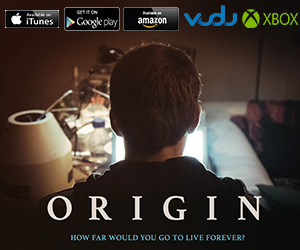
Watch ORIGIN on iTunes Starting December 13, 2016
ORIGIN: Three science students are on the verge of making a breakthrough in their research into biohacking and cell aging. When one of them is diagnosed with a terminal illness, they break moral boundaries and use their untested research on him, in an attempt to save his life.
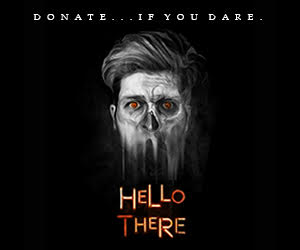
Watch the Indiegogo Campaign video here!
HELLo tHERE takes a dark, but realistic look at the psychological trauma caused by inequality, racism, and homophobia. Our goal is not just to scare the bejesus out of you, but to create a film that is equally terrifying as it is thought provoking. This world is, and has always been, plagued by senseless fear and hatred for one another as human beings. My team and I are fully dedicated to telling stories that showcase the “horrors of reality” in an effort to inspire change.

Watch it on iTunes here!
COLD NIGHTS HOT SALSA takes you inside the international dance world of Victor and Katia, aspiring young salsa dancers from Montreal, who seek to win a World Salsa Championship.
During their three-year quest Victor and Katia draw upon the talents of Eddie Torres, Tito & Tamara, Billy Fajardo, and Katie Marlow. Central figures in the salsa dance world, these mentors put their passion and professional dance skills before you and reveal what it takes to perform and compete at the highest level.
Victor and Katia’s story is a love story. It’s the story of their love to dance and of how being a couple enhances and also complicates their life together and dance ambitions. After winning the Canadian Salsa Championship, we watch as they first compete in the 3rd World Salsa Championship. They return home to Montreal to work on taking their dance skills to a higher level. After months of preparation, including working with a number of key mentors, they put their dreams on the line and travel to Florida to compete in the 4th World Salsa Championship.
Along with Victor and Katia’s story, the film explores some of the social and historical roots of salsa, as told through Eddie Torres, Billy Fajardo, Tito Ortos, and Edson Vallon.
Experience the beauty and excitement of competitive dance, the compelling force of world leaders in salsa, and the romantic charm of two young dancers who want to make their mark on the Latin dance world.
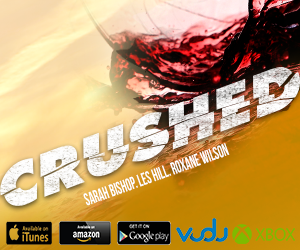 CRUSHED Movie Now on iTunes! – Ellia returns to her family vineyard after her father dies in a winery accident. When his death is ruled a murder and her mother becomes the prime suspect, she’s determined to find the truth. As Ellia uncovers secrets about her family and the winery, she becomes the murderer’s next target.
CRUSHED Movie Now on iTunes! – Ellia returns to her family vineyard after her father dies in a winery accident. When his death is ruled a murder and her mother becomes the prime suspect, she’s determined to find the truth. As Ellia uncovers secrets about her family and the winery, she becomes the murderer’s next target.



